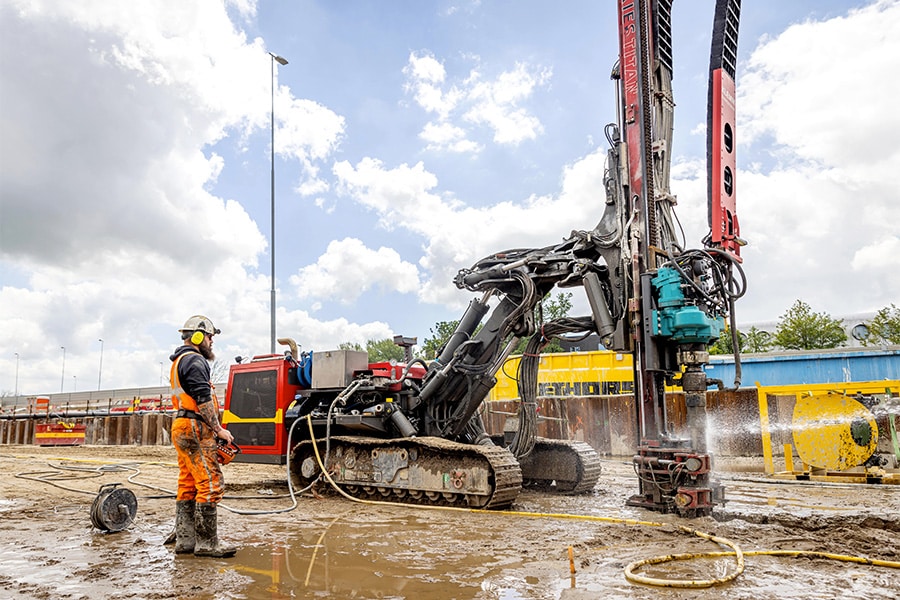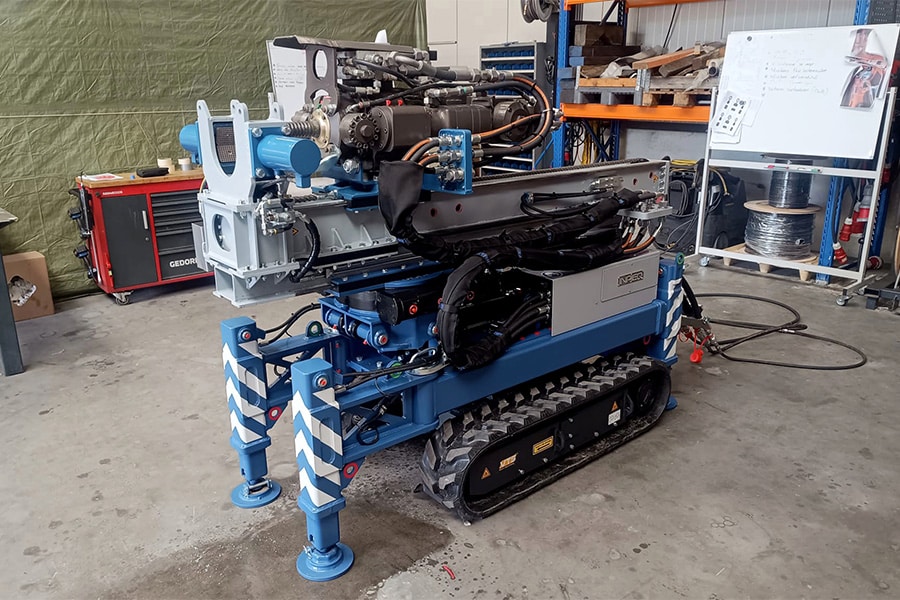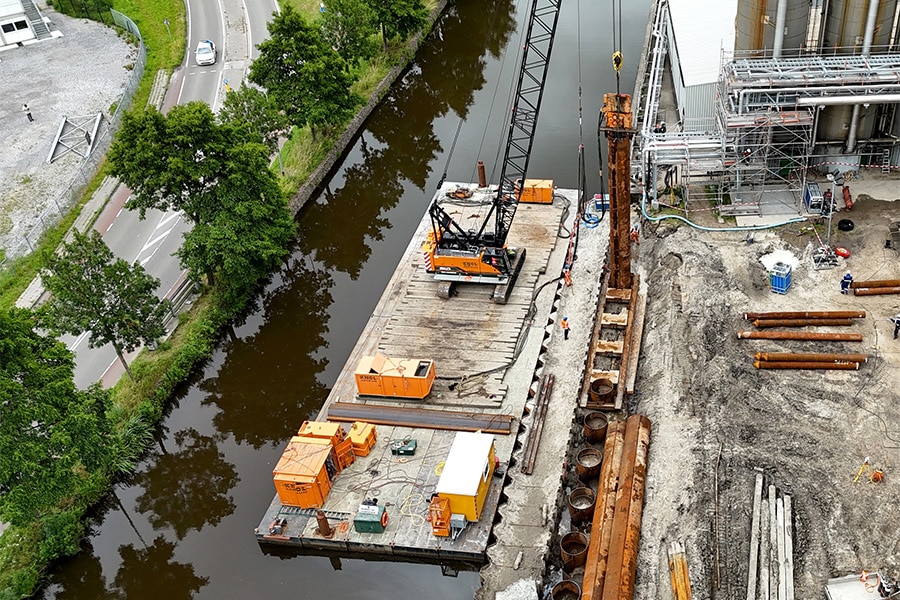
Modern version of proven concept
Until the late 1970s, basalt was the product of choice to protect dikes and coastlines from erosion. In 1976, at the intercession of the Department of Public Works, Holcim Coastal developed a concrete version of the proven concept: Basalton.®. Unlike the time-honored natural stone variety, Basalton can be processed by machine, has a similar authentic appearance, good trapping and therefore excellent stability. Over the years, Holcim has developed the product further and further. The Wolferen-Sprok dyke reinforcement project, for example, uses a variant with an ecode layer and a few years ago the Basalton Quattroblock was launched, the most stable stone deposit of the moment.

If a dike tender calls for settlement stone, Basalton is usually standard in the tender, begins Jean-Pierre Quataert of Holcim Coastal. "Also Waterschap Rivierenland likes to see Basalton on their dikes. For the Wolferen-Sprok project, we are supplying a total of about 25,500 m² to construction consortium De Betuwse Waard, divided into several phases. Last year 3,500 m² was delivered, this year 14,000 m² is planned and for next year another 8,000 m². Transport of Basalton is currently carried out for 98% directly from our production site in Alphen aan den Rijn by ship to the work site, after which the products are delivered directly to the crane for subsequent placement on the embankment. All of this contributes to the lowest possible EQI score to maximize CO2-reduction."
Polygon dressing
Holcim Coastal's modern Basalton cladding is available in several variants. At Wolferen-Sprok, the STS version was chosen, consisting of a set of 18 concrete pillars of different sizes in polygon bond that is applied by machine in one movement. "It provides an extremely stable settlement on the dikes," says Quataert. "The rough coating of lava rock with 50 percent voids stimulates the development of microorganisms and allows plants and weeds to settle faster for a natural and green top layer. Despite the low height of Basalton, we can guarantee 50 to 100 years of stability, where previously many higher natural stone columns were required." With an eye toward further preservation, the Basalton Quattroblock has been developed, a much more stable block, requiring significantly less concrete. "Placement is also much easier and is done with a standard grading grab."
The introduction of the Basalton Quattroblock in late 2018 is like a boy's book. "Immediately after the launch, we scored the biggest job ever in the Netherlands of setting stone on a dike. We will supply no less than 700,000 m² over the next few years for the reconstruction of the Afsluitdijk. A great reward for this unique product and also the most stable stone settlement at the moment." The success in the Netherlands did not go unseen by the Holcim Group. Currently, the headquarters in Switzerland is fully committed to smarter design (e.g. Basalton Quattroblock) and smart materials (e.g. bioreceptive and CO2 free concrete) to make coastal and river areas safer and more sustainable.



